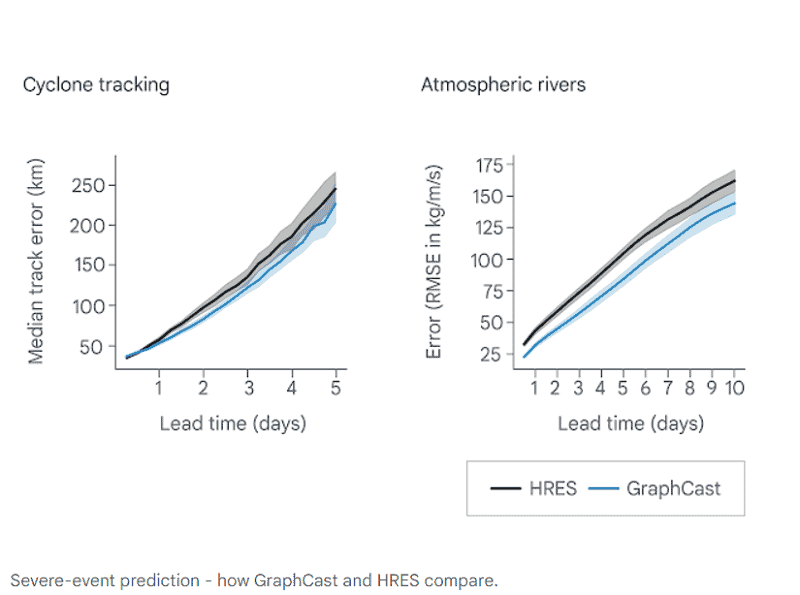Google has developed GraphCast, an AI model that can make faster and better weather predictions than traditional algorithms. The AI model also requires less infrastructure.
Google continues to develop AI models for various applications. A latest addition to this is the development of its GraphCast AI model. This AI model predicts weather forecasts faster and better than traditional weather prediction algorithms. Google can validate this claim through peer-reviewed study.
The AI model developed by Google Deepmind is a GNN model. These specialized AI models or neural networks process graphs. Graphs are data structures that contain different pieces of information and where it is indicated how these pieces of information relate to each other. These types of data structures can store large and interconnected data sets. This makes them very suitable for describing “weather events,” among other things.
Google GraphCast features
The GraphCast model is trained on weather observations of about 4 decades collected by the European Centre for Medium-Range Weather Forecasts (ECMWF). The training dataset also includes satellite information, information from radar systems and other sources.
More specifically, the AI model is capable of forecasting weather conditions up to 10 days ahead with many detailed insights. These include predictions for temperature during this period, humidity, wind speed and multiple variables at different altitude levels.
A test shows that the AI model, compared to other commonly used algorithms noted higher accuracy. Especially when the model only made predictions for different air layers, such as troposphere, the atmospheric layer directly above the surface of the earth.
In addition, Google GraphCast would be able to better predict extreme weather conditions, such as predicting a cyclone more accurately compared to existing algorithms.
Less infrastructure required
The GraphCast model also has another advantage. Compared to other weather forecasting algorithms, this AI model uses less infrastructure. By default, weather prediction models use a lot of hardware because they rely on physics calculations. These calculations are complex and often take a very long time.
Google now indicates that its new weather prediction model can provide the 10-day forecasts with a single Google TPU v4 instance. This saves a lot on hardware and data center capacity. In addition, according to Google, the calculations are performed within a minute.
Other models and availability
GraphCast is not the only weather prediction model developed by Google Deepmind and Google Research. The tech giant also developed already-used weather prediction models such as a regional Nowcasting model, which enables weather forecasts 90 minutes in advance, and the regional weather model MetNet-3.
The Google GraphCast weather prediction model is now available on GitHub. A live demonstration of the weather model’ s forecasts is accessible on the ECMWF site.
Tip: Google Cloud serves enterprises with specialized GKE version

